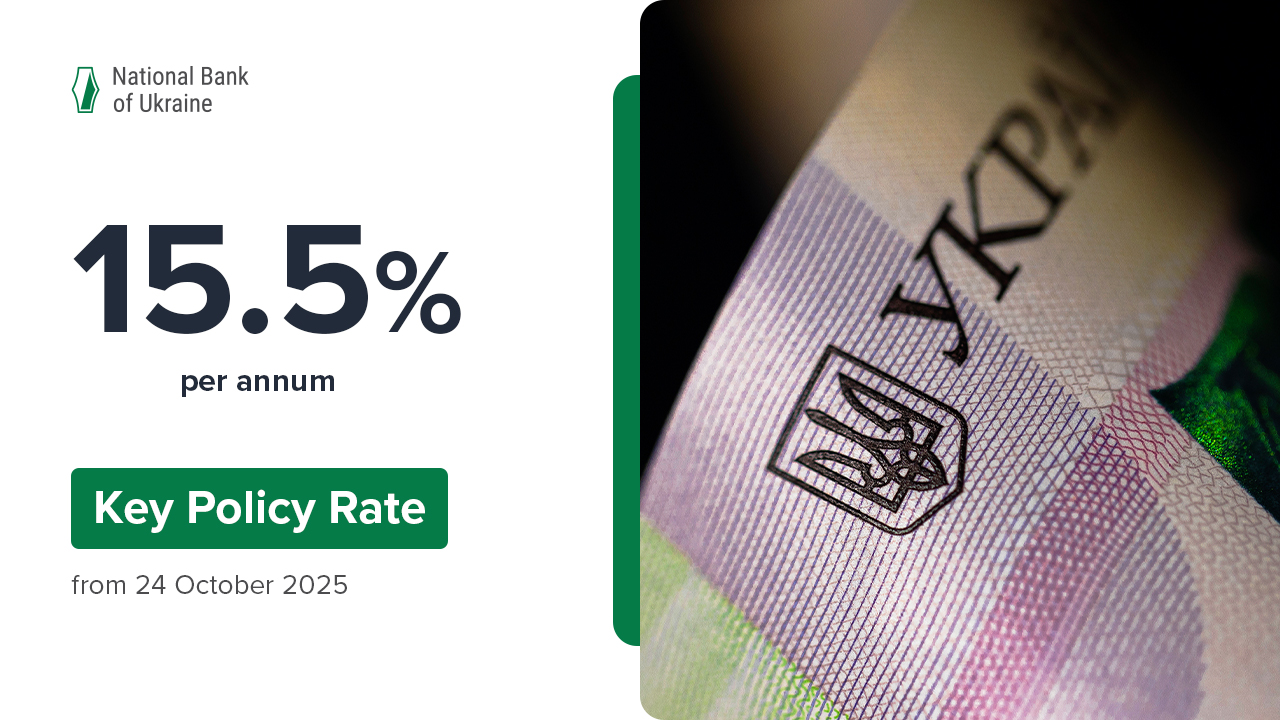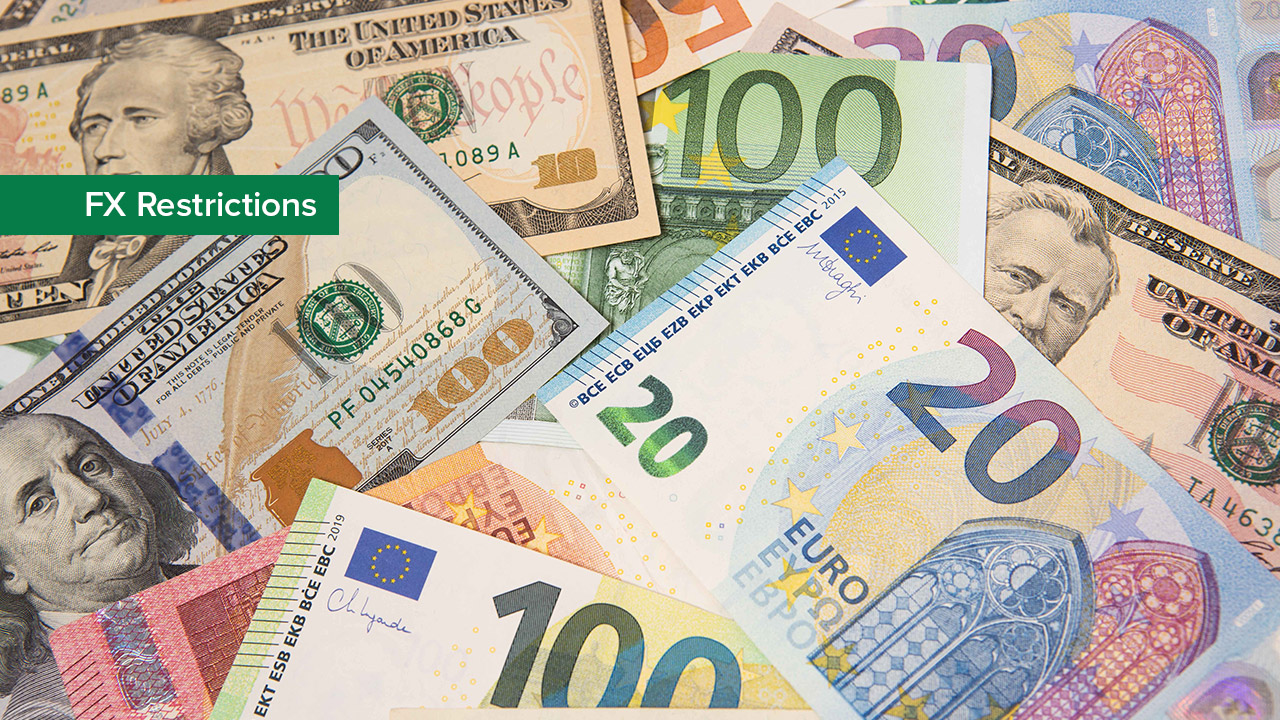I would like to greet all the participants at our traditional meeting following the Board's monetary policy meeting. I would like to inform you that the NBU Board continues to pursue a prudent monetary policy. We have decided to leave the discount rate at 22% per annum.
This move aims to stave off any adverse impacts that domestic political instability and global economic turbulence could have on the Ukrainian economy and, consequently, will enable the NBU to achieve its objective of lowering inflation to 12% by the end of 2016 and 8% by the end of 2017.
As we can see, inflation has been on a firm descending trend. In January 2016, headline inflation stood at 0.9% m-o-m and was broadly in line with the NBU’s inflation projections for the month. January's price developments were consistent with the projected disinflation path, envisaging moderation of headline annual inflation to 12% by the end of 2016. Core inflation continued to moderate, standing at zero in January. According to preliminary estimates based on a ten-day monitoring of price developments, annual headline inflation remained low in February 2016.
Why has inflation been declining in recent months?
The disinflation trend can be attributed to the NBU’s commitment to prudent monetary policy and subdued domestic demand.
Domestic demand exerted no upward pressure on prices, even despite a significant increase in social payments in December 2015. It should be noted that an increase in social payments in December had a temporary effect on FX market developments, thus having a limited impact on inflation developments. Consumer demand fueled by social payments was largely met by an increased supply of domestically produced goods diverted from exports due to trade restrictions. I am referring here to trade curbs imposed by the Russian Federation, which include embargoing imports of Ukrainian food products and blocking transit of Ukrainian exports to Central Asia via its territory.
Domestic consumer demand was partially met by imported products. At the beginning of the year, the supply of imported goods increased owing to the cancellation of a temporary surcharge on imports and lower import duties on Ukrainian goods imported to the EU. One should also keep in mind depreciation of main trade partner countries’ currencies, which has made imported products cheaper. Trade restrictions imposed by the Russian Federation on imports of Turkish fruit and vegetables, parts of which were diverted to Ukraine, were yet another contributing factor to the glut of imported goods in the domestic market.
The heightened exchange rate volatility observed in January-February 2016 had a relatively limited impact on the inflation rate.
In the first two month of the year, a number of factors have exerted pressure on the Ukrainian economy. These included both situational and fundamental long-term factors, which we have already mentioned.
We have anticipated some of these factors and reflected them in our forecasts. I am referring here to falling global commodity prices, depreciation of partner countries’ currencies, trade curbs imposed by the Russian Federation, including restrictions on exports and a ban on the transit of Ukrainian goods through its territory. We also anticipated a seasonal slowdown in economic activity, the lifting of a temporary surcharge on imports, and lower import duties on Ukrainian goods imported to the EU.
These factors contributed to the deferred demand for imported goods, which increased last year. I would like to cite one example here. In January 2016, machinery imports picked up by 6.3% y-o-y, whereas imports of motor vehicles recorded a twenty-fold increase. Last year machinery imports contracted by 31.4%, while imports of motor vehicles fell by 32.5%, meaning that importers deferred purchases until the beginning of 2016 expecting that import duties would be lifted.
However, some unexpected factors emerged, adding more pressures. I am primarily referring to the increased political turbulence, and delays with the resumption of cooperation with the International Monetary Fund and other official partners. Surely, these developments have fueled depreciation expectations among businesses, investors, and households.
Under these circumstances, being aware that the exchange rate is critical for price and financial stability, the NBU undertook measures to smooth excessive exchange rate fluctuations. These measures were not intended to prevent exchange rate movements triggered by fundamental market factors.
We have repeatedly stressed that our policy is not aimed at achieving a certain exchange rate level or making the exchange rate move within a target band. If fundamental factors exert pressures that cause the exchange rate either to strengthen or to weaken, the exchange rate should move in this direction. These exchange rate movements reflect the adjustment of the economy to new domestic and external conditions. Thus, hryvnia depreciation opens the way for domestic exporters to compete with lower prices at home and abroad.
Instead, the NBU takes measures to mitigate exchange rate fluctuations triggered by situational factors.
With this in mind, the NBU held 16 FX auctions in January-February, including 13 FX sales auctions through which USD 298.8 million was sold to banks. Overall, the NBU's net FX sales in the interbank market amounted to USD 233 million.
These measures have yielded positive results: we avoided the sharp exchange rate fluctuations that we observed last year. This week, the exchange rate appreciated to UAH 26.50-26.80 per US dollar. Furthermore, today the exchange rate stands at UAH 26.20 per US dollar. The NBU held an FX purchase auction through which it purchased USD 30 million with the cut-off rate standing at UAH 26.29 per US dollar.
Surely, prices for imported and domestic goods will gradually adjust to new exchange rate levels. However, the pass-through of the exchange rate’s impact on inflation will be much more limited than last year, primarily due to limited exchange rate fluctuations and the NBU’s stronger efforts to smooth excessive exchange rate volatility. Additionally, subdued aggregate demand and an abundant supply of domestically produced and imported goods will dampen the transfer effect from currency depreciation into inflation.
The NBU deems it appropriate to keep its headline inflation projection unchanged at 12% by the end of 2016 and 8% by the end of 2017.
Accordingly, the NBU confirms that its pre-announced mid-term inflation targets remain within reach.
We are often asked, "How will headline inflation moderate from 43.3% y-o-y at the end of 2015 to 12% y-o-y by the end of 2015?"
As before, we believe that subdued aggregate demand will remain one of the key factors that will keep inflation firmly on a downward trend in 2016.
Low global energy and food prices are among the factors supporting the downward trend in inflation. We have not changed our expectations since the previous meeting of the NBU Board on monetary policy issues as to the extent to which they will impact inflation developments.
I would like to single out the impact of fiscal policy. We expect that prudent fiscal policy will enable the NBU to meet its inflation objectives. A number of indicators suggest that we will not return to fiscal dominance this year.
In particular, there was a surge in budget revenues and balances held in the NBU’s single treasury account. Furthermore, Naftogaz NJSC and the Deposit Guarantee Fund will not require additional financing.
At the same time, a sharper decline in inflation will be restrained by the planned upward adjustment of administered prices. Currently, all the information regarding the scheduled increases in prices for energy, central heating, and other utility tariffs are in line with our assumptions that are already reflected in our inflation projections for this year.
Why do we keep the discount rate unchanged under such conditions?
The NBU sees risks, the materialization of which might prevent attaining the forecast and, consequently, prevent the regulator from meeting its inflation objective this year. The major downside risks to the inflation forecast include both external and domestic factors that determine the balance of payments performance, the exchange rate path of the hryvnia, and inflation expectations of businesses and households.
First, there is risk of a further decline in global prices for key Ukrainian export commodities. At the beginning of the year, global steel prices were slightly lower than expected and reflected in our forecast.
Global metal price movements are observed, in particular, in China. There are fears that Ukrainian producers will risk losing their market shares if they raise prices.
Second, it takes longer time for exporters to shift their focus to new sales markets and find new transport routes for the delivery of their goods. As we have already mentioned, trade curbs and restrictions imposed by the Russian federation will cost Ukraine an estimated USD 1.1 billion (1.4% of GDP) in export losses and account for the largest increase in the current account deficit, which is expected to widen to USD 2.5 billion. However, these projections reflect assumptions that Ukrainian exporters will shift their focus to other markets and seek new transport routes for the delivery of their goods.
Most of these risks materialized at the beginning of the year. In particular, in January alone, Ukraine suffered export losses of around USD 200 million due to limitations on exports to Russia and CIS countries. Unfortunately, it takes a longer time for exporters to switch to new markets and find new alternative transit routes for Ukrainian goods.
Finally, we can see hopeful signs that Ukrainian exporters are given a green light to transit their goods by road via the territory of the Russian Federation. Hopefully this will remain the case.
Third, there are growing risks associated with domestic political turbulence, delays with the resumption of cooperation with the International Monetary Fund, resulting in further delays in disbursements of official financing. As we have repeatedly stressed, cooperation with the IMF is critical not only for building up Ukraine’s international reserves, but is also of critical importance for bringing forward sweeping and far-reaching reforms, thus sending a positive signal to Ukraine’s foreign partners and investors. However, it is impossible to bring the IMF program back on track unless political stability is restored in the country.
If these downside risks materialize, it might have implications for inflation expectations and the balance of payments performance. As a result, it has the potential to undermine the NBU's ability to meet its inflation objective of lowering inflation to 12% by the end of 2016. Therefore, we have decided to maintain the current monetary conditions.
Going forward, provided that inflationary risks subside, the NBU may resume the gradual easing of monetary policy. This can be achieved if political stability is restored in the country and Ukraine brings the IMF program back on track, as long as there are more favorable external conditions for domestic exports.
At the same time, should the aforementioned risks materialize, the NBU will be forced to keep a prudent monetary policy in place for a longer period to achieve its inflation objectives.
Another issue that was discussed at the Board meeting was foreign exchange regulation.
As you know, the validity of the NBU Board Resolution On Resolving the Situation in the Monetary and Foreign Exchange Markets of Ukraine expires tomorrow. The NBU adopted a decision to move ahead with plans to gradually phase-out administrative restrictions on FX operations. This move has been prompted by signs pointing to the gradual recovery of confidence in the banking sector and FX market stabilization.
First, the growth of household deposits in domestic currency is gaining momentum. Second, household deposits held with solvent banks increased by UAH 22.7 billion in the second half of 2015. This upward trend has persisted in 2016.
Second, households tend to sell more foreign currency to banks than they purchase from banks. In 2015, banks’ net purchases of foreign currency from households amounted to about USD 1.5 billion. In January-February 2016, households’ net sales of foreign currency to banks amounted to USD 261 million.
Third, the demand from banks for government bonds denominated in foreign currency issued by the Ministry of Finance of Ukraine suggests the availability of FX liquidity in the banking sector. Since the beginning of 2016, the Ministry of Finance of Ukraine has floated domestic sovereign bonds denominated in foreign currency for a total of USD 917 million.
With this in mind, the NBU has increased the amount of FX cash or investment metals that banks’ customers are allowed to withdraw from their accounts per day from an equivalent of UAH 20,000 to UAH 50,000. The NBU has also raised the amount of domestic currency cash that banks’ customers are allowed to withdraw from their accounts per day from an equivalent of UAH 300,000 to UAH 500,000. Additionally, the maximum amount of FX cash that banks are allowed to sell to an individual per day has been increased from an equivalent of UAH 3,000 to UAH 6,000.
Thus, as you can see, the NBU takes consistent steps towards liberalization of FX controls. We embarked on this path in the fall of 2015 following the successful completion of Ukraine’s debt operation amid the increase in Ukraine’s international reserves and completion of the banking sector clean-up. We will keep moving ahead with plans to ease administrative restrictions once appropriate prerequisites are in place.
Our next meeting on monetary policy issues will be held on 21 April 2016, as scheduled.
Thank you for your attention!







